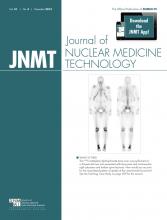Abstract
Clinically valid cardiac evaluation via treadmill stress testing requires patients to achieve specific target heart rates and to successfully complete the cardiac examination. Methods: A comparison of the standard Bruce protocol and the ramped Bruce protocol was performed using data collected over a 1-y period from a targeted patient population with a body mass index (BMI) equal to or greater than 30 to determine which treadmill protocol provided more successful examination results. Results: The functional capacity, metabolic equivalent units achieved, pressure rate product, and total time on the treadmill as measured for the obese patients were clinically valid and comparable to normal-weight and overweight patients (P < 0.001). Data gathered from each protocol demonstrated that the usage of the ramped Bruce protocol achieved more consistent results in comparison across all BMI groups in achieving 80%–85% of their age-predicted maximum heart rate. Conclusion: This study did not adequately establish that the ramped Bruce protocol was superior to the standard Bruce protocol for the examination of patients with a BMI equal to or greater than 30.
- cardiac exercise stress testing protocols
- cardiac assessment
- Bruce protocol versus ramped Bruce protocol
- body mass index (BMI)
Footnotes
Published online Nov. 12, 2013.







